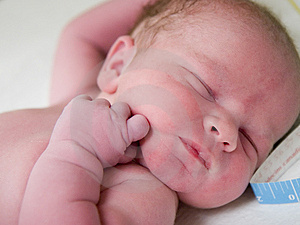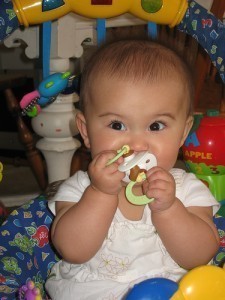How Long is a Newborn Baby?
Medically speaking, a newborn baby is also called neonate, Newborn Baby which refers to an infant who is currently in the first 28 days of life. Such an infant could only be a few weeks, days or even hours after birth. The term ‘neonate’ comes from the Latin word ‘neonatus,’ which literally means ‘newborn.’ This term covers full-term newborns, post-mature infants as well as premature infants. In addition to these basic facts, there are more to learn about it including the length of a newborn baby.
which refers to an infant who is currently in the first 28 days of life. Such an infant could only be a few weeks, days or even hours after birth. The term ‘neonate’ comes from the Latin word ‘neonatus,’ which literally means ‘newborn.’ This term covers full-term newborns, post-mature infants as well as premature infants. In addition to these basic facts, there are more to learn about it including the length of a newborn baby.
The Length of a Newborn Baby
How long is a newborn baby? The total body length of newborns is around 35.6 to 50.8 centimeters or 14 to 20 inches on the average. However, it can be smaller especially in cases of premature newborns. The average weight at birth is 3.2 kilograms or 7.05 pounds, although it can be anywhere from 2.7 to 4.6 kilograms or 5.5 to 10 pounds. In terms of appearance, newborns usually have narrow hips and shoulders, slightly protruding abdomen as well as relatively short legs and arms.
Additional Facts and Other Interesting Details
The head of a newborn is quite large in proportion to other body parts. Likewise, the cranium is bigger in relation to the size of the face. The skull is approximately ¼ of its total body length, which is made up fontanels or soft spots. As the infant grows, the bones in the skull will fuse together naturally. The protein referred to as noggin is primarily responsible for the delay in the skull fusion of infants. At birth, the skull changes shape so that it can fit right through the birth canal. This is the reason why the head of newborns are usually elongated and misshapen at birth.
In some cases, newborns develop lanugo, which is described as fine and downy hair in the body. It usually appears in areas such as face, ears and forehead of premature infants. Additionally, it is likely to develop in other areas of the body like shoulders and back. Within a few weeks, such hair disappears naturally. After birth, the scalp is swollen or bruised temporarily, which is very true for hairless newborns.
The vision of newborns is unremarkable. They can only focus on objects that are 45 centimeters or 18 inches directly in front of them. This level of sight is sufficient for them to see the areola especially when breastfeeding. They develop depth perception only when they become mobile. Moreover, they can also distinguish different kinds of tastes including salty, bitter, sour and sweet.





